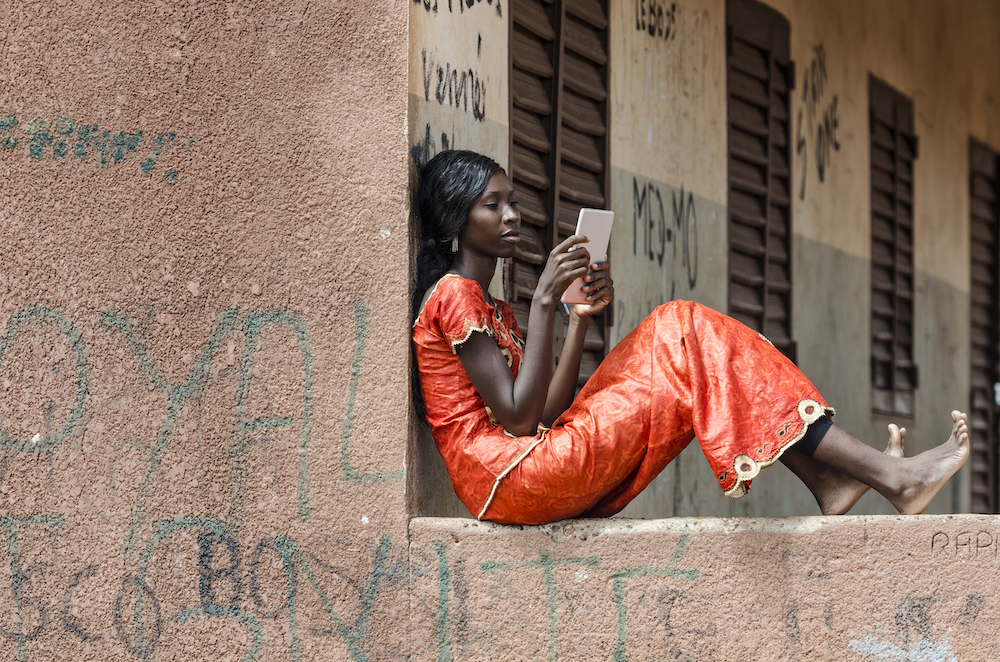Lesson 2: Options for Controlling Your Experience on Instagram, Facebook, Messenger and WhatsApp
Before you start the lesson, make sure to read through the lesson overview and the module presentation.
Lesson Overview
Over the last few years, we have developed several features designed to help you gain more control over your experience. This includes control over who can contact you or comment on your posts and the kind of language you want to see. Many of these tools were designed thanks to direct feedback from teens like you.
Lesson Preparation
ESTIMATED TIME
ESSENTIAL QUESTION
- How do online safety tools designed for young people help protect your online safety?
MATERIALS
PREPARATION
- Students will need internet access for this lesson.
Group Discussion [10 minutes]
ASK YOUR STUDENTS
- What steps do you take to ensure your personal information and privacy are protected while using the internet and social media?
- What precautions do you take when making online friends?
- Have you ever had a conversation with your parents or guardians about online safety? What did you learn from those discussions?
Part 1: Report
TELL YOUR STUDENTS
If you see something that you think shouldn’t be there, whether it is on Facebook, Messenger, Instagram or WhatsApp, we want to know about it so we can take action. That’s why we’ve developed tools so that you can easily report anything, such as an account, post, Story or direct message (DM). Reporting is available on all of our technologies and is completely anonymous.
Part 2: Block
TELL YOUR STUDENTS
You can block anyone who is bothering you on Facebook and Instagram. After doing so, that person will no longer be able to view your photos or videos or search for your profile. People are not notified when you block them. And now, when you block someone, you can preemptively block any new accounts that person may create.
Part 3: Mute
TELL YOUR STUDENTS
Mute was developed to give you a chance to take a break from an account you follow. There are many reasons why you might need a break from a particular account. You can use Mute to hide posts in Feed and Stories of a selected account. You can unmute the account whenever you are ready.
The account you are opting to mute will not be notified. This option for controlling your experience is also available on Facebook as the Unfollow/Hide option. On WhatsApp, you can mute an entire conversation.
Part 4: Restrict
TELL YOUR STUDENTS
The Restrict tool was developed to help combat and prevent online bullying. When you restrict someone, only you and the person you restrict will be able to see their new comments on your posts. The restricted person also won’t see when you are online or when you have read their DMs.
Using Restrict, you can also control who can tag you in photos, mention you in Stories and comment on your posts. These options are designed to give you control over how people can interact with you on Instagram.
Part 5: Unfriend
TELL YOUR STUDENTS
On Facebook, you have the option to unfriend someone without that person being notified.
Part 6: Safety Notices
TELL YOUR STUDENTS
Safety Notices in your DMs will notify you when an adult who has been exhibiting suspicious behaviour is trying to interact with you. This feature will protect you against unwanted contact from adults and empower you to protect yourself by giving you the option to end the conversation, block, report or restrict that adult.
Part 7: Sensitive Content Controls
TELL YOUR STUDENTS
Sensitive Content Control helps you choose how much or how little sensitive content you see in Explore from accounts you don’t follow. Sensitive Content Control has 2 options: Standard and Less.
If you are under 16 and new to Instagram, you will automatically be defaulted to the Less option. If you are already on Instagram and under 16, we will send a prompt encouraging you to select the Less experience.
Part 8: Tags and Mentions
TELL YOUR STUDENTS
In addition to defaulting you into a private account when you sign up for Instagram and stopping adults you don’t follow from being able to DM you, you can also switch off the ability for people to tag or mention you if you do not follow them. Also, by default, when you first sign up, people you do not follow won’t be able to include you in their content in Reels Remixes or Guides.
Part 9: Control Who Can Send You DMs
TELL YOUR STUDENTS
On Instagram, everyone has the ability to control who can send them DMs. You have the choice to decide whether you can receive DMs from anyone or only people you follow. You also have the choice as to who can add you to group chats and whether messages from people you don’t follow go into a request folder or are never delivered to you at all.
On Messenger, you can decide who can send you messages and where your messages go (Chats List, Message Request folder or not to be delivered at all). You can also choose to receive messages or not from people with your phone number, friends of friends on Facebook, accounts you follow or have interacted with on Instagram or your followers on Instagram.
On WhatsApp, you can decide who can add you to WhatsApp groups. We have added a privacy setting and invite system to help you decide who can add you to groups. My Contacts means that only people you have in your address book can add you to their groups. My Contacts Except provides additional control over who among your contacts can add you to a group.
- To enable these options, go to Settings, then tap Account > Privacy > Groups and select one of 3 options: Everyone, My Contacts or My Contacts Except.
- A group admin who can’t add you to a group because of your setting choice will be prompted to send you a private invite through an individual chat, giving you the choice to join the group.
Part 10: Hidden Words
TELL YOUR STUDENTS
Hidden Words is a feature designed to help protect you from having to experience abusive DMs. When this feature is turned on, any DM request that contains abusive words, phrases or emojis will be automatically sent to a Hidden Requests folder, so you never have to see it.
You can either use our pre-populated list of offensive words, phrases or emojis or you can customise your own — as we understand that what is offensive to one person can be very different for someone else. This feature also works on comments, hiding comments that use offensive words, phrases or emojis.
Part 11: Pinned Comments
TELL YOUR STUDENTS
While we take managing negative experiences seriously, we also think it is important to focus on the positive ones. Pinned Comments is a feature that allows you to choose a positive comment under your post and pin it so that it stays at the top of the comment thread, setting the tone for others to follow.
Source
familycenter.meta.com
Congrats!
You've finished the lesson
Source:
This content is hosted by Meta and currently includes learning resources drawn from Youth and Media at the Berkman Klein Center for Internet & Society at Harvard University under a Creative Commons Attribution-ShareAlike 4.0 International license. You can make use of them, including copying and preparing derivative works, whether commercial or non-commercial, so long as you attribute Youth and Media as the original source and follow the other terms of the license, sharing any further works under the same terms.



 Previous Lesson
Previous Lesson 




